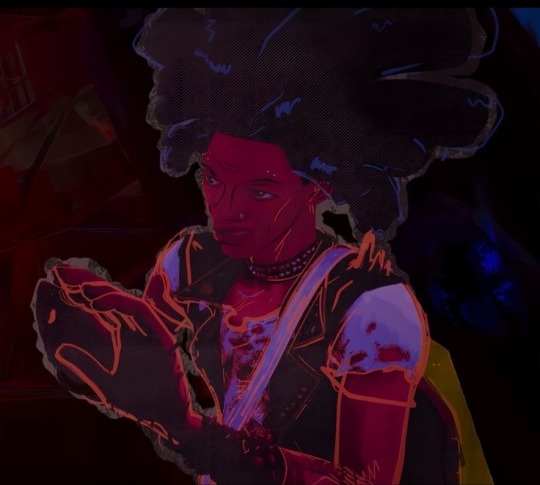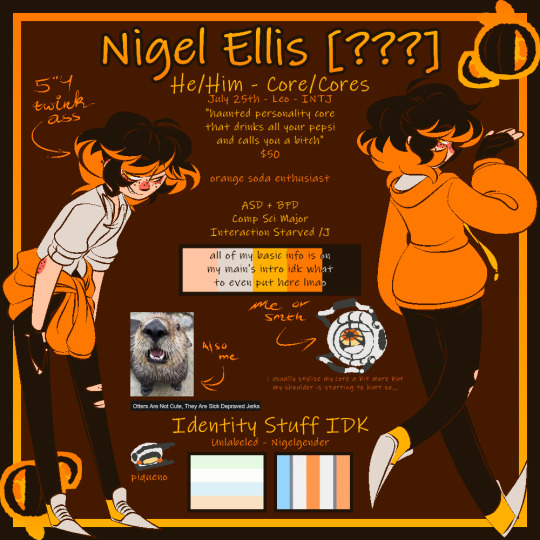#beneficial animals
Text
Not all farm animals are cute and cuddly. Some of the most important animals on any farm can be slightly scary but have vital jobs farmers depend on.
When darkness falls across the farm, many think of cows, pigs, sheep, chickens and goats settling in the barn. But there is also a whole host of others —large and incredibly small animals going about their crucial roles to support the healthy functioning of our farms night and day. While many think of them only as creepy crawlies or predators of the night, the web of life is intricate. You might be astounded to learn more about these beneficial animals that help people and the crops we grow.
Take a farm’s soil, for example. Oozing with organisms—soil is the most biologically diverse part of the Earth. The soil on a farm includes thousands and thousands of beetles, springtails, mites, worms, spiders, ants, nematodes and other organisms. This multitude of soil organisms engineers pathways for rainwater, provides nutrients for plants and breaks down organic matter from previous crops.
These beneficial insects and soil creatures—and bigger predators that patrol the soil surface—provide checks and balances to the food web that makes farms fertile.
What may be most frightening is to imagine a world without these beasties fulfilling their roles on farms.
1. Earthworms
It’s hard to get the warm fuzzies for earthworms. They have no legs. They don’t have eyes or a face, and their bodies stretch like rubber. They secrete a slime—mucus—that helps them slide more easily through the soil. But these faceless fellows can be big friends to farmers.
Earthworms break up hard soil, create tunnels that allow air and water to penetrate better, and bring important minerals to the soil. Most of the 180+ species of earthworms in the U.S. bring great benefits to soil health on farms and can help improve fertilizer efficiency.
Indeed, some non-native species of earthworms can negatively affect the soils in some forests. But when it comes to farms, earthworms are friends.
2. Millipedes
Their name comes from Latin, meaning “thousand legs.” As it turns out, no known millipede species has a thousand legs. Most top out at several hundred. Although millipedes may look unpleasant, these arthropods (they are not insects) are harmless to humans and are, in fact, very beneficial to farm soils.
Millipedes shred the leftover residue of previous crops—organic matter—and mix it through the soil. This gives smaller soil organisms like fungi and bacteria a greater surface area to work on and speeds the breakdown of the crop residue, ultimately making the soil more fertile.
3. Ladybugs
Even people afraid of most insects usually aren’t creeped out by ladybugs. But for those with Coccinellidaephobia, a fear of ladybugs, walking through a garden or farm can be terrifying. It makes sense—in nature, red and black is often a sign to stay away. However, these diminutive flying beetles bring huge benefits to farmers and gardeners. Ladybugs are so prized by gardeners and farmers that you can buy them from suppliers!
Why? They’re nature’s perfect pest control. Ladybugs (also known as lady beetles and ladybird beetles) gobble up crop-destroying aphids, one of the most problematic insect pests for farms and gardens. A single ladybug can consume 50-60 aphids daily and thousands over a lifetime. One ladybug can lay hundreds of eggs in a season, and its larvae will eat hundreds of aphids before becoming adults. In addition, ladybugs feed on mites, scales, mealy bugs, thrips and white flies, all of which damage crops.
Another sign of how highly ladybugs are esteemed: they are the official state insect of Delaware, Massachusetts, New Hampshire, North Dakota, Ohio and Tennessee.
4. Pollinators
As many schoolchildren can tell you, plants need pollinators. Why? A quick refresher: pollen from a plant's male anther needs to be transferred to the female stigma for a plant to reproduce via seeds.
About 87% of flowering plants rely on pollination, and more than 150 food crops in the U.S. That's where pollinators come in. They make the crucial exchange of pollen.
Several species of animals help with pollination, including hummingbirds, butterflies, moths, even flies and wasps. But bees do the heavy lifting, transferring far more pollen than other animals. Although European honeybees and bumblebees are the best-known U.S. bee varieties, our nation harbors more than 4,000 species of bees!
Protecting undeveloped pollinators' habitats, such as wildflower meadows on the edges of farmland, is vital to protect these industrious, fruitful creatures.
5. Spiders
What is it about spiders that unnerves people? Is it their sticky, often hard-to-spot webs, or the way they pounce so quickly when prey is near? Something about spiders unsettles most people. Yet spiders are incredibly beneficial to us.
“If spiders disappeared, we would face famine,” Norman Platnick of New York’s American Museum of Natural History told the Washington Post. “Spiders are primary controllers of insects. Without spiders, all of our crops would be consumed by those pests.”
A study found that more than 600 species of spiders patrol U.S. croplands, keeping crop-eating pests under control.
6. Coyotes
Though they have a reputation as a pest animal and a nuisance, coyotes are, in fact, a species that can bring benefits to farms.
Coyotes are skilled predators, keeping populations of rodents that can destroy crops—such as rabbits, squirrels, gophers, voles and mice in check. Removing coyotes from an area can cause rodent populations to explode.
While it’s true that coyotes are omnivorous and will sometimes eat fruit, berries and vegetables, 90% of their diet comes from meat. They do not pose a threat to farmers’ crops.
Related to dogs and wolves, coyotes have found a way to coexist with humans and expand their range. Formerly inhabiting the western portion of the U.S., coyotes can now be found in every state except Hawaii and have moved south, far into Central America.
Ranchers sometimes may have a legitimate gripe with coyotes because, in packs, they are capable of attacking and killing livestock. The common solution: good fencing plus the coyote’s cousin, a livestock guard dog or two patrolling the territory.
7. Snakes
Snakes get a bad rap. Many people seem to have an almost visceral aversion to the sinuous reptiles. But snakes are generally shy creatures that avoid human contact.
There are about 50 species of snakes in the U.S., and 20 of those are venomous—but even they shy away from human contact. While snakes are sneaking about our fields and avoiding us, they are preying on gophers, field mice, rats, rabbits and other rodents that damage crops by feeding on them or burrowing into their roots.
8. Skunks
Anyone whose dog has ever been sprayed by a skunk knows: it’s Grade A horrible. No one wants to be anywhere near a skunk. We fear skunks with good reason. But these slow-moving, stinky beasts can bring benefits to farms.
Skunks consume pest insects like caterpillars and grubs, field mice and voles, helping to keep them under control. They also eat berries, leaves and grasses. Beekeepers do not like skunks, however. Because of their thick fur, skunks aren’t deterred by bee stings and will seek out honeybee hives to dine on.
9. Bats
These winged mammals are the poster child for Halloween and have been associated with all things scary at least as far back as Bram Stoker’s classic horror novel Dracula, published in 1897.
Some people fear that, like Dracula, bats will drink their blood. But none of the 40 bat species inhabiting the U.S. drink blood. Three species are nectar feeders that help pollinate desert plants, while most U.S. bats eat insects in abundance. A single insect-eating bat can consume hundreds of pest insects in a night, equivalent to half its body weight. A cave full of thousands of bats can consume literal tons of insects.
Economists have quantified the dollar value of bats’ insect pest control to U.S. agriculture at $23 billion annually.
10. Owls
The banshee screech of an owl can sound supernatural in the pitch blackness of night on a farm, but owls are super-carnivores that benefit farmers significantly.
Owls serve an important role in controlling rodent populations and protecting crops. They are a natural pest defense system as they are highly skilled hunters of the night when rodents and other small mammals are on the move.
With their ghostly night stalking enabled by their giant wingspan, it's no wonder owls are effective carnivores. Owls can eat up to 10% of their body weight in rodents each night. Because hunting is what they do best, they have also been known to prey on snakes, amphibians and invertebrates.
2 notes
·
View notes
Text

A Baby Bison
Beneficial-Sky-7600
1K notes
·
View notes
Text
Female crane fly (family Tipulidae) laying eggs. I knew some species lay eggs in soil, but wasn’t expecting it to look this silly 😆
While most crane fly adults don’t feed (they’re not giant mosquitoes!), most larvae eat dead plant matter. Larvae are an important part of the soil ecosystem because they convert organic matter into nutrients that plants and other life forms can use. Crane flys are also an important food source at all stages of their life for everything from spiders to song birds.
#crane fly#tipulidae#diptera#mosquito hawk#gollywhopper#beneficial insects#soil#soil science#ecology#nature#bugs#biodiversity#animals#inaturalist#arthropods#bugblr#entomology#insect appreciation#funny bugs#funny video#needs squeaking bed noises#or dorky music#leather jacket#flies are cool#flies#not all flies are bad#don’t squish bugs#biology nerd#invertebrates
76 notes
·
View notes
Text
With No Way Home leaving Tom Holland's Peter Parker basically shelved - alongside Sony Studios basically killing the live-action Spider-man industry with almost purposeful flops like Morbius and Madame Web -
In addition to the millions of dollars poured into the technical advancements of animation into Sony Animations specifically for Spider-Verse - like Hobie, Ham, and Noir - alongside the EXCESSIVE AMOUNTS of concept art for characters like Hobie;
AND the release of shorter animatics such as The Spider Within - I think it's becoming very very clear that The Spider-Verse is expected to be the next frontier in Spider-Man Cinematic Renditions.
This new short tells me that Sony Animation is willing to let The Spider-Verse team branch out and experienment not just with styles and characters, but with genres and storytelling as well.
Releasing the short in theatres is often what studios do to test audience engagement and interest, and although it was natural for them to release it publically now - what with BTSV being delayed - I still think it says something about what may or may not be doing down behind the scenes.
In my opinion - I expect to hear big news from Sony Animation not too long after the release of BTSV.
But that's just me.
And I have a very solid feeling about what I think the first installment might be - based on the trends of Sony and Marvel moviegoers in general.
There's a number of reasons why I think that is - but I'm not gonna tell you any. Because I'm lazy.
What y'all think? Anyway here's Hobie


#Sony if you wanna talk about it#I'm on to you#We can make this mutually beneficial#PLEASE#spiderman#atsv#spider man#marvel#across the spiderverse#mcu#Sony Animations
77 notes
·
View notes
Video
#this is a case where context is slightly beneficial to appreciate it more but god it's so good#lt#screwball football#avery#vid#guns tw#this has been in my drafts for over 6 months... i got cold feet#lovely character animation by Bobe Cannon
153 notes
·
View notes
Text


speebys (species of bug, 3cm tall)
#robert eo speedwagon#doodles#he is a beneficial insect that partakes in animal mutualism :)#??? date
75 notes
·
View notes
Text
Vegans on this website are something else man
#crismon tomes#generally speaking i find people who are vegan as a DIET and also just generally are informed about animal wellfare to be fine#but so many weirdos on this website have the most asinine opinions ive ever heard#its actually not immediatly easy to be vegan. feeding your cat a vegan diet is animal abuse. riding horses is not inhherent abusive (?)#if you care about animal wellfare youd be advocating for ethical farming bc no matter how preachy you get everyone is not gonna be vegan#it just wonr happen. its not feasable#every animal has eaten every animal for millions of years and we can do so in kind ethical and mutually beneficial ways. its very easy#to be normal about how other people live their lives#i think what annoys me most is the moralizing#no one is a bad person for eating meat/animal products. they just arent lol
22 notes
·
View notes
Text




These fishnets make me look blurry?? Nice✨
Treat me ~ Tip me
#My butt is an optical illusion now ✨#Fishnet Friday#Fishnets#Alt pinup#Pinup girl#Satans knitwear#Any tips or treats are always massively appreciated 💕#Treat (lingerie wishlist) me (amazon wishlist) ~ Tip (pypl) me (cshpp)#Busy day tomorrow!!! Seeing extended family i think as well as animal shelter shift!!#High anxiety but both are activities that should be beneficial#I hope your weekend is as wonderful as you are my loves ✨💕#Pretty lingerie#Corset lacing#Underbust corset#🍑 is served.#🍑 take a bite.#bi girl#uk girl#cheeky#wlw
191 notes
·
View notes
Text
ARTIST INFO (UPDATED VER.)

I truly am one of the people that exist I think. You may have my middle name, but you're not getting my last name out of me, only [???] for you! (<- still hasn't solidified one with his partner anyway)
I stopped taking it seriously mid way through, which explains the random stuff thrown in. I'm awful at making MTA sheets lol.
The cute little flag on the right was made by an old friend years ago but uh, my reblog is literally the only thing left of that post. So here.
#c1nn4bunny.png#blog intro#meet the artist#but this time I'm actually okay and happy to be met :3#the things being comfortable in your skin will do for your confidence tbh <3#anyway yup. hi. ayup.#I'll post Cinnamon/Mae's sheet at a later time idk. Just feel like animating the different shifts is beneficial for the whole.#Shapeshifter aspect and all that. That and I need to fully plan out the full-fur forme uh#ANYWAY HI YEAH HOW ARE WE DOING PEOPLE THAT. UH. DON'T FOLLOW ME ELSEWHERE. THIS SURE IS A DEVELOPMENT HUH?#anyway dark chocolate oranges are really good and I could not pass up making that my sweets theme it fit too well#hitting post and then not thinking about this okay cool :thumbsup: yeah!
14 notes
·
View notes
Text
anyway as soon as i pry myself off this couch im gonna share some screenshots of bg3 protags on my sideblog. just gotta like. reach the desk first.
#all i can think about is the shelves im gonna get installed here over the next little bit fdghj#yall dont understand its so hard to keep things clean and brain friendly when you just dont have anywhere to put stuff.#hellish#& then i get overwhelmed and turn into a massive bitch when i try to get it under control fdgh#instead its been like. 2 straight days of dopamine i fucking swear?? my body probably definitely wouldnt let me do this for a living#(my hip is screamingggg dfghgjj) but actually if i could & if i could work in a team then yeah. ykw i enjoy it.#organization go brrrrrrr#i dont think she was expecting me to work that fast either but ive been like a feral animal. skittering over clutter.#finding Spots for Things#okay i lied the flood was actually beneficial in one way to me specifically.#estranged father just forgot a Bunch of tool sets here & ive claimed them now fdghjk#that nail gun is MINE#she suggested i look out for an actual tool chest/bench thing (ykw the ones with wheels and stuff) for everything and i havent been that#excited for anything in months fdgh tools are expensive alright. too bad he took the table saw.#i dont talk much abt my Masc Hobbies as i call them lmao no real reason to but hoooboy i love to Build Things#give me that ikea desk ill have it done in an hour or less every time#maybe trade school is still on the horizon for me gfhj always wanted to Weld Stuff i think id be good at it#as much as i fuckin loathe yard maintenance i was a real garage sooooo bad its not even funny#shame i wasnt just inherently expected to know car stuff tm i feel like i would have loved it too#scarrier to learn on your own later in life especially with a lease vehicle but ill get there eventually#anyway yeah bg3! new mods. new ocs#have not done much with them yet but they Exist and theyre pretty
8 notes
·
View notes
Text
not to keep vagueposting about animal welfare discourse, but i happened to run into one of the blogs that was shitting on scout for their cow husbandry and the shit they were saying was so fucking stupid...it was something along the lines of 'rabbits aren't social animals because their wild ancestors have a social group set entirely by mating/the HRS tries to force you to bond rabbits unnecessarily and is a peta-affiliated organization/its unnecessary to spay female rabbits because the 85% association between uterine cancer and not spaying is only supported by two studies', all of which may make sense for breeding rabbits is complete and utter bullshit when dealing with pet rabbits.
Rabbits are indeed social animals that grow anxious when alone and should have SOME form of companionship most hours of the day. This does not have to be another rabbit, and the urging to establish a bonded pair is typically done for people who are OUT OF THE HOUSE most of the day. HRS and shelters don't 'force' pairings, they encourage them because having someone around 24/7 isnt always viable in American households. When I tried to get Celeste bonded because I was worried about her welfare (this was when I was 14 and new to rabbits), both the HRS and shelters talked us out of it because she very clearly did not care about other buns, and didn't need to be bonded because there was always someone around them. But if you're a singular person who's away from home most of the time, then yes you need some sort of partner animal because it reduces stress in your rabbit.
Those social structures are ofc going to be different if you have unfixed breeding animals, but the core aspect of it is still the same. Rabbits are social animals. They are comforted by the presence of others around them, form bonds with other rabbits, and feel more secure in groups. Just because they are more territorial when unfixed (as they should!) doesn't reduce the fact that they are social prey animals, it just means that you need to keep them in different conditions than you would a fixed creature with less hormonal urges
The HRS is not aligned with PETA. They denounce affiliations with meat breeders because they're entirely based on improving the welfare of rabbits that are kept as pets. I can see why some might feel offended on their stance against meat rabbits, but rabbits are still primarily viewed as livestock, and after hearing enough comments about people wanting to eat my rabbit, I can understand why they'd be so clear on it. People are assholes about pets that are commonly viewed as feeder animals.
There is indeed a high risk associated between UNBRED unspayed female rabbits and uterine cancer. This is supported by several studies on animals with similar breeding lifestyles by multiple veterinary institutions. You won't notice it in your breeding females because the risk is SPECIFICALLY for unbred animals, aka most pets. So yes, spaying is necessary for your doe's health if you do not intend to regularly breed or have stopped regularly breeding
Even if there wasn't a very real danger to their health, you'd still need to get them fixed to reduce behavioral problems. Unfixed rabbits are much more territorial, destructive, and aggressive, making them more difficult to keep in a home environment. They will growl, they will lunge and bite (and rabbit bites are not something you want to fuck with- I have scars from Celeste's nips), they will piss and shit to mark their territory and it WILL be pungent and unsanitary even if they are litterbox trained. They can still be cuddly with you, sure, that won't reduce their value as pets, but a perpetually sexually frustrated and territorial animal is not fun to deal with and is arguably unethical for the rabbit. If you want a pet rabbit, you need to get them spayed. And I say this from personal experience- Celeste wasn't spayed when we got her, but after she did get spayed, she became much more manageable and less likely to bite. She was still manageable beforehand, but afterwards she was a hell of a lot more relaxed and not stressed
There's nothing wrong with having significantly different husbandry because you are a meat/fur breeder; unfixed animals have different temperaments, different needs, and are typically kept in different conditions that are more economically and behaviorally suited to turning a profit. But those care requirements change drastically when you have only one to two fixed animals in a home environment, which means that you cannot pass judgement on pet care requirements when you're a meat breeder, and visa versa.
#lets also not forget that this whole discourse started bc someone said that culling goat kids at birth based on sex felt wrong#and some meat breeder took it as a personal attack even though rabbits and goats are DRASTICALLY DIFFERENT ANIMALS#yes hard culling rabbit kits is necessary. but its also not a massive fucking waste when they have huge litters#if you're breeding an animal for meat and they only have one or two at a time over a span of some months then its a MASSIVE WASTE#but anyways this is about rabbits and yeah. im bitter bc i miss celeste and the holier-than-thou attitude got to me#i dont have problems with how they keep their rabbits but i do have problems with them applying farming rules to domestic pets#if you have multiple unfixed rabbits in an outside hutch then yes you need to keep them seperate to prevent breeding and stress#but they're still fine because *they know other rabbits are there*#they can see smell and hear them#if you have ONE rabbit in a home environment it NEEDS companionship bc its alone#if its unfixed then no it cant be another rabbit but it can be you. if its fixed then thats when another bun is an option#and yes they are intensely social and rabbits that do accept a partner benefit massively from it have you even seen bonded pairs#they groom each other and flop together and spend all their time with each other its def. a mutually beneficial pairing#celeste just didnt need it bc there was always someone home with us so she saw other rabbits as a threat#but if that wasnt the case then it would have been different#they arent dogs or cats!! you cant treat them as such!!#and for the record the husbandry needs of unfixed vs fixed animals is a Thing for all other pet species#or at least most of the
27 notes
·
View notes
Text
gintama was fucking insane for putting gintoki and the ideal (but false) narrative in a sexual relationship. i never said that. but i remember it and i just stare at the wall and sigh and plot gintama on the venn diagrams of stories making radically good storytelling moves for real. right next to homestuck and haruhi
#^ kintama arc blogging. kintama moe girl anime ending blogging. ginko* (*not ginko) the scabbard to his--#idealized iteration on the concept of the series (dick)#sopping wet gintoki posting#i think i could make a real analysis out of specifically this element and the dating sim gintoki ending sort of inherently casting--#successfully consummated adult relationships as combative AND mutually beneficial/collaborative. idk. studies it under a microscope. has fu#<- still obsessed with dating sim arc gintoki ending
11 notes
·
View notes
Text
finding a cool animal facts video but the comments are full of a bunch of whiny babies saying "oh that's sooo gross" or "kill it with fire" i hope the parasitic worms get you
#obviously its fine and normal if you just find it too gross to look at but maybe just click away instead of being a soulsucking shitdweeb#animals dont have to be cute or environmentally beneficial to be worth preserving#ill die mad about this
4 notes
·
View notes
Text
If you knew you were going to be lost in the wilderness and you have to pick one guy to help you survive, your first pick would be Knuckles but your second pick would be Silver. In this essay I will-
#silver#knuckles#silver the hedgehog#knuckles the echidna#i'm unable to be more coherent about this headcanon than this#they have the same skillset!! I don't know how else to tell you!!#both are the only ones who would know how to like. skin you an animal. find you clean water. build you a shelter. etc.#silver might be a little out of his element but only in a way that's beneficial#'everything's not on fire? oh this'll be a pinch!'
32 notes
·
View notes
Text
okay so the bad news is that my wifi is out (in that it is very very slow most of the time rn) and i have very little data and don’t really wanna buy more so that’s why i’ve been less active. the good news (for Me) is that netflix still mostly works so i’ve been watching through the entirety of yugioh duel monsters so like at least i’m not bored and stuck in 144p youtube land. the great news is that i’ve decided that i think it’d be fun to try and make my own trading card game. because all i’ve been doing for the past two days has been watching an anime about a tcg. this is a very good idea with no flaws
#.txt#and that’s what you missed on glee or whatever#i watched ygo as a kid but this is my first time watching it all through start to finish#this tcg idea i have probably isn’t gonna amount to much so i’m more thinking of it as#practice in creature design#and maybe practice drawing animals#which i think will be beneficial to my character designs overall#i don’t make them creechy enough#anyways once i finish ygo on netflix (and hopefully i have proper wifi again by the time i’m done) i’m gonna watch the japanese version#to Conpare#*compare#because the version on netflix is the 4kids dub which is hilarious but from what i’ve seen people Online say#it’s a lot shallower than the original#which does not surprise me#oh i also need to finish season 0.. lettuce head kaiba my boy….#edit: i have found that they only put s1 of the dub on netflix for some reason#so i guess i have a lot more to watch than i thought#this is very much not a bad thing
22 notes
·
View notes
Note
every time i see the absolute wild takes ARAs put out, or the straight up misinformation used to make animal agri seem scarier or more cruel than it is, I wonder what could be done if those efforts were put towards actually picking out the real, non-fabricated flaws of the systems in place and pressuring them rather than this "to evil to exist" stuff that will never go anywhere. like how much real change is drowned out by "milk demons are adding spikes to cow noses so that their moms hate them"
Honestly sometimes I wonder if peta is secretly run by people who profit off of skimping on regs for animal agriculture. What if the main Mind behind peta is the CEO of Tyson chicken and he just promotes progressively more insane ARA takes and lies so common society doesn’t take any animal welfare movement seriously and they can continue abusing animals for profits.
#I’m joking#but it really has overtly harmed animal welfare#it’s moving the goalposts to a point we cannot ethically or even feasibly reach#Which makes it harder to garner support for actually beneficial welfare laws
49 notes
·
View notes